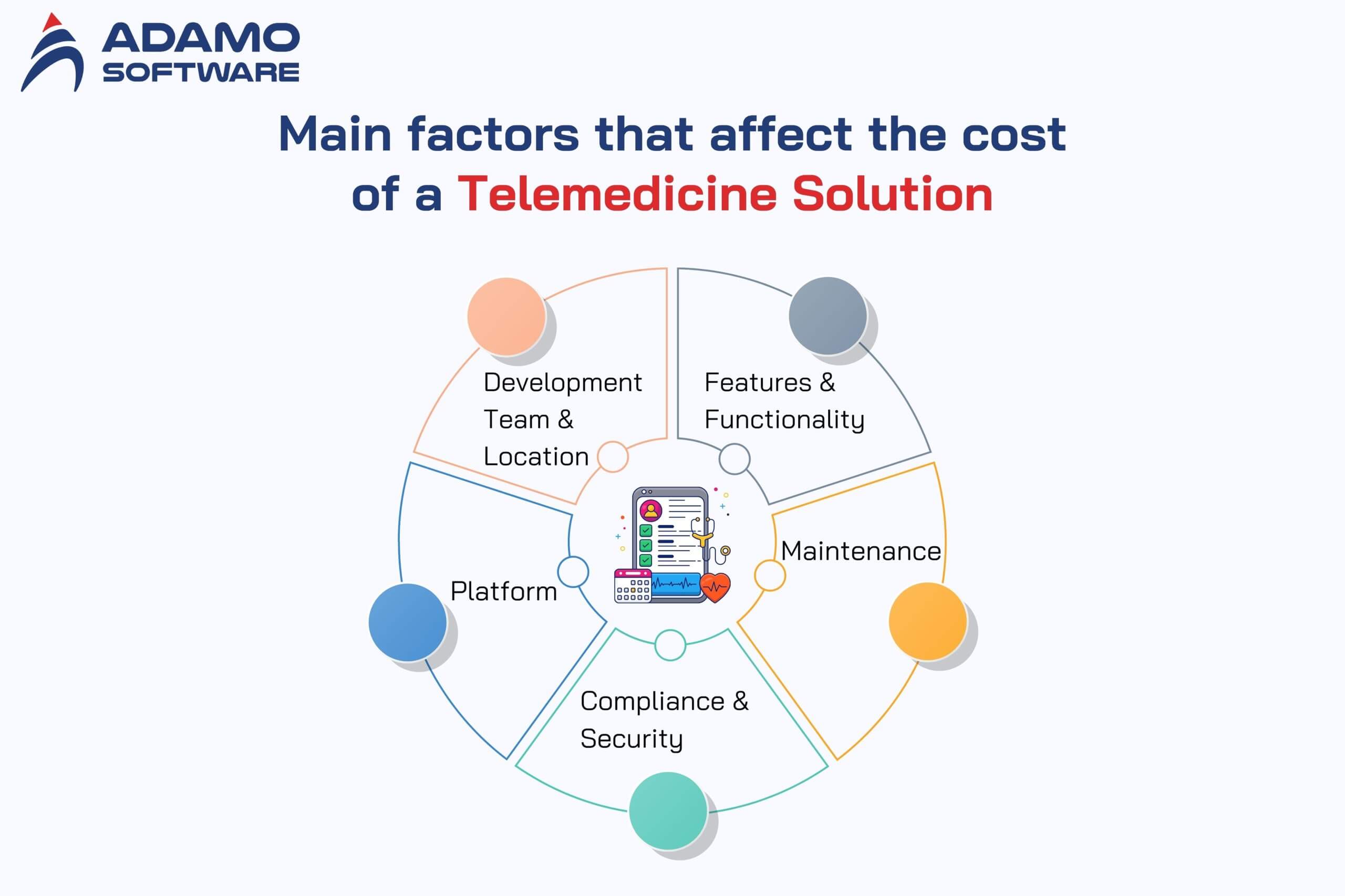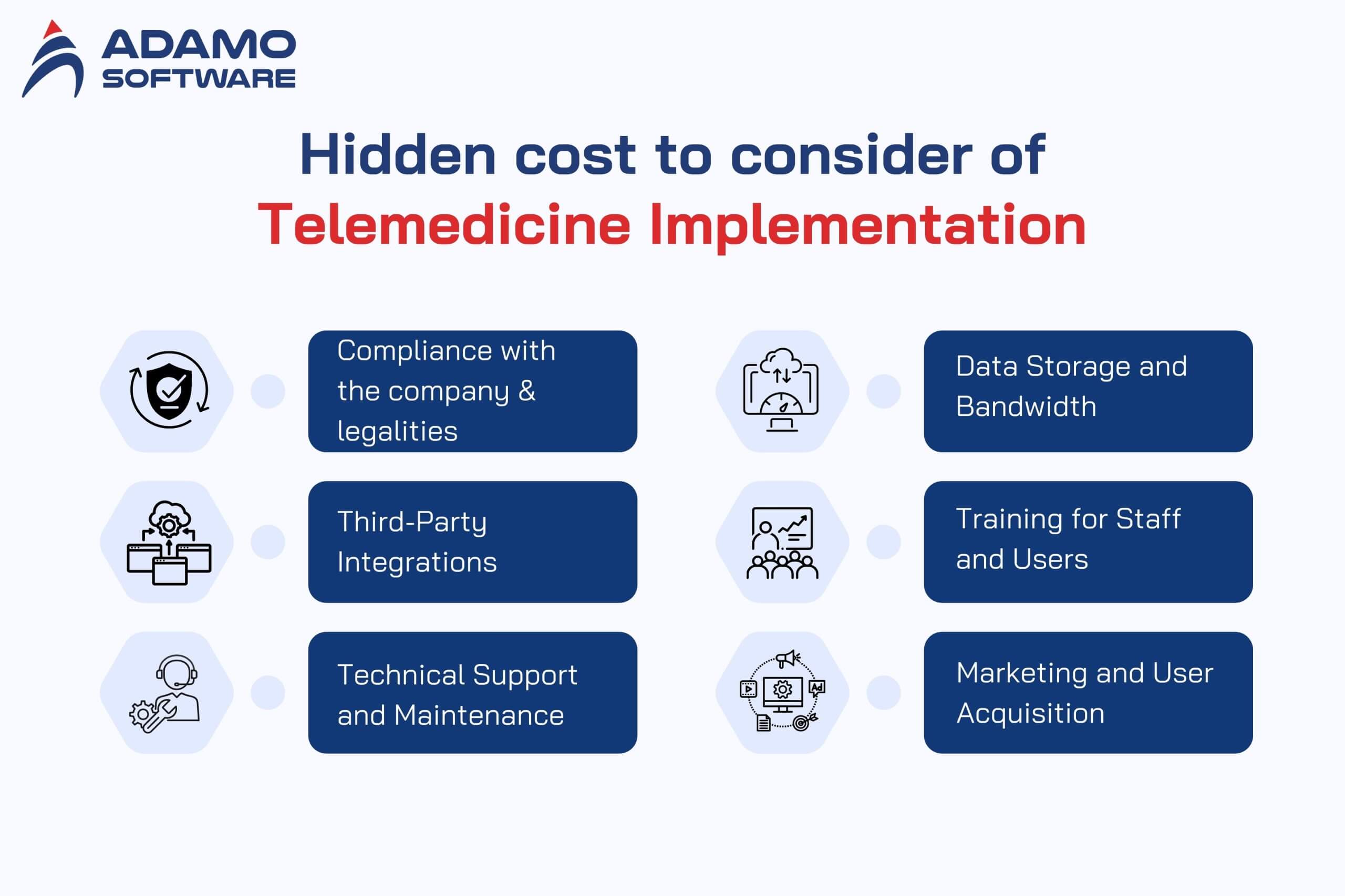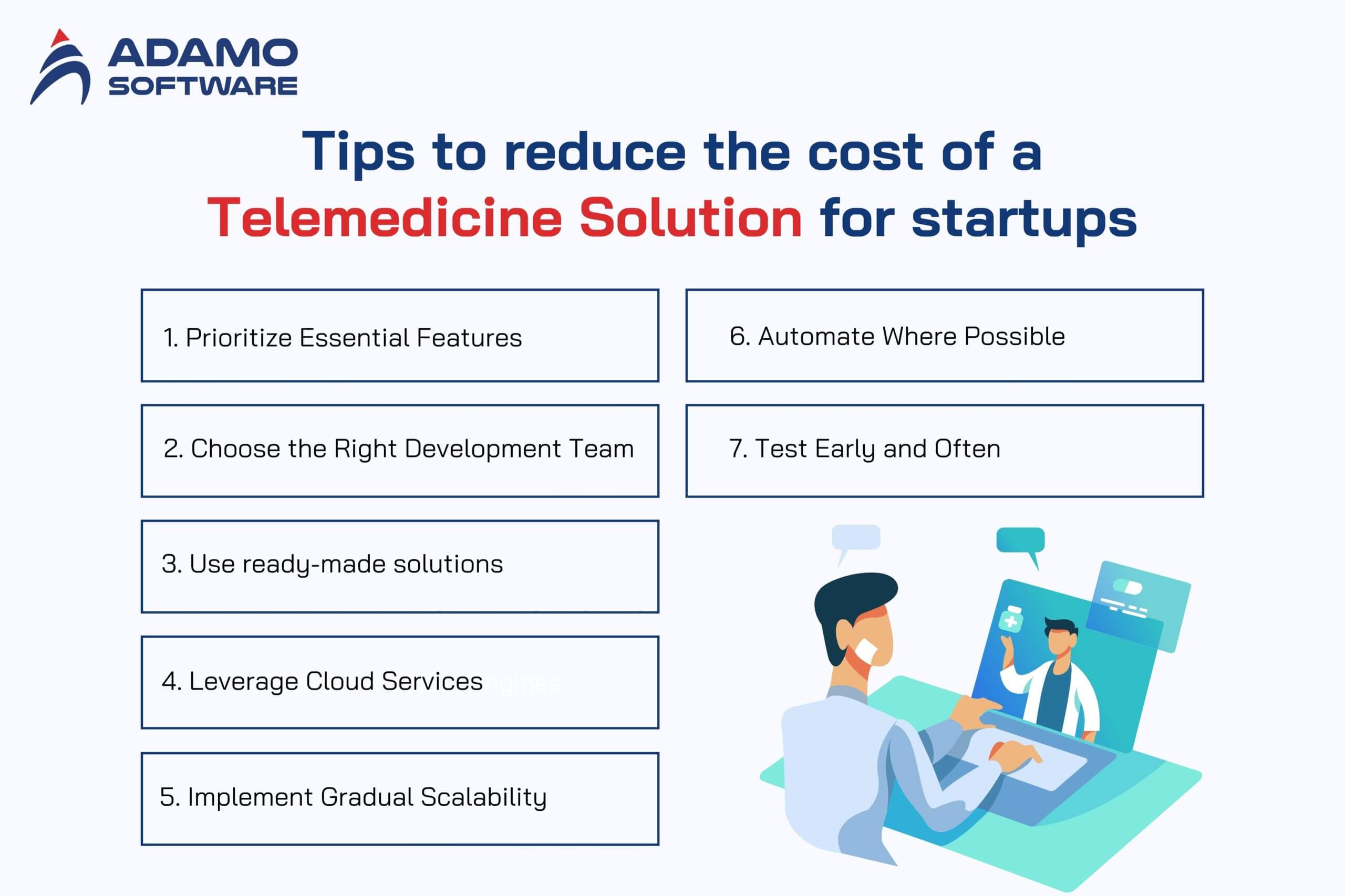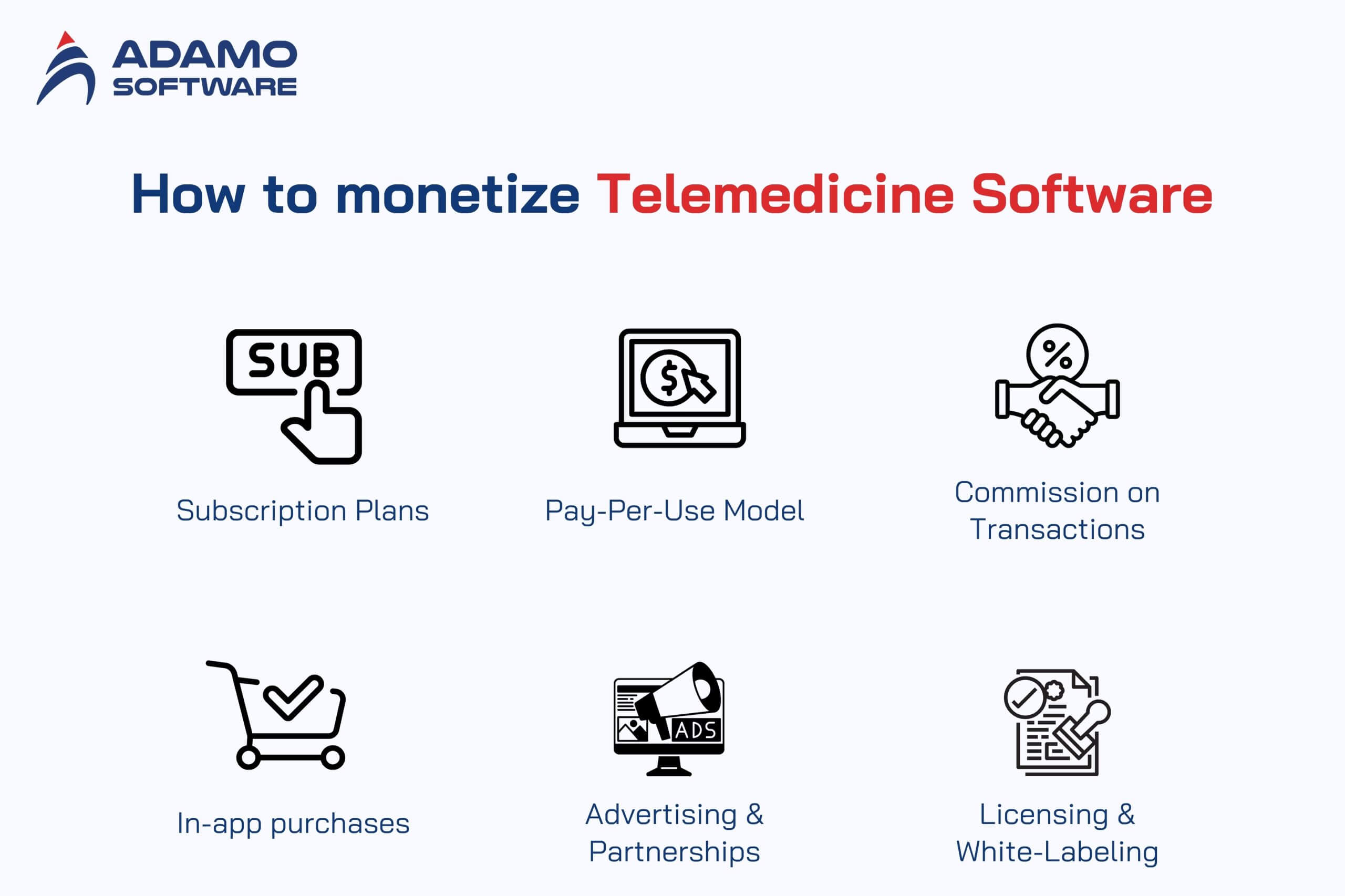Cost of a telemedicine solution: Tips to optimize budget for startups

The world of medicine is a continuously moving locomotive and telemedicine is the key locomotive that controls its speed. Recognizing the cost is critical for startups because it can unlock new opportunities when implementing a telemedicine solution. You may be building an uncomplicated technological platform. You may also be creating an extensive individual system to manage telemedicine. Risk management is a major concern in this process. Cost management is also a major concern. These factors are essential to remain strategic and profitable.
In the continuation of this article, we will discuss the main input drivers influencing these costs. We will also discuss the potential hidden costs one might experience when implementing. Additionally, we will suggest some ways in which startups can save money. These methods will not require skimping on quality. We will also cover strategies for attaining revenue from telemedicine software. This will ensure you obtain benefits from your investment. Lastly, we will show how help from professionals can enhance the cost-effectiveness of telemedicine. This assistance can take the cost of telemedicine to the next level for your business.
Now let us get to specifics about understanding how to turn your telemedicine service into a cheap venture. The factors that determine the cost of a telemedicine solution are at the forefront of this transformation. For startups, investing in telemedicine solutions can open new opportunities. However, it is essential to understand the costs involved. You may be building a simple platform. Alternatively, you may be making a feature-rich system. Managing the expense of a telemedicine solution is key to staying competitive. Managing costs is also essential for staying efficient.
In this article, we will explore the main factors that impact these costs and the hidden expenses you might encounter during implementation. We will also share practical tips to help startups reduce costs without compromising quality. Additionally, we’ll discuss various ways to monetize telemedicine software. So, your investment pays off in the long run. Finally, we’ll guide you on how expert assistance can further optimize the cost of a telemedicine solution for your business.
Let’s dive into the details and learn how to make your telemedicine platform a cost-effective success.
I. Main factors that affect the cost of a telemedicine solution
The cost of a telemedicine solution is defined by several critical factors. The cost of a telemedicine solution depends on several factors. These must be carefully thought out by startups because every decision made proportionally affects the budget. In dealing with social networking platforms, even the type of features you incorporate, the team they hire everything matters. The following are the key considerations that define the cost of a telemedicine solution.

1. Features and Functionality
Hence, it may be possible to note that the various features incorporated into this solution significantly affect its cost. Simple functionalities such as video calling, scheduling of appointments, and profiles of the patient are cheaper and quite easy to implement. However, if you’re interested in additional extras, the price goes up. These extras include smart health insights provided by artificial intelligence. They also include health tracking by wearable devices. Another example is having the application in multiple languages to cross cultural boundaries. Incorporating these features requires time and resources. As a result, you will spend more money on development costs.
2. Platform and Technology
Platform type also determines the cost of a telemedicine solution because the featured services vary with the selected platform. For instance, developing an application for both Android and iOS is going to cost more than just targeting any specific platform. Likewise, web-based solutions should not be as expensive as native application solutions. However, they may be slightly less flexible than native applications. By adopting advanced technologies such as the cloud for data storage or blockchain for records, your general expenses will rise.
3. Compliance and Security
Technology such as telemedicine solutions must conform to legal and security requirements. For instance, HIPAA rules apply to any organization in the U.S. to ensure the privacy of patient’s information. In Europe for example you will be required to adhere to GDPR. Unfortunately, compliance with these standards does protect patient information, but integration increases the price of a telemedicine product. Encryption, secure servers, and payments to security firms for checking the site security and form the budget.
4. Development Team and Location
Another reason why telemedicine app development solutions are expensive is the team that you hire to develop your platform. Local development teams are known to be more costly than teams that are sitting in other parts of the globe. For instance, a developer in North America could be three times higher than one in Eastern Europe or Asia. Yet, selecting an experienced team, domestic or international, produces more qualified and non-defective work.
5. Maintenance and Scalability
The game plan of initial development is the foundation that is required which makes up the overall picture but requires much more content. You will also have to put some money aside for further maintenance and modifications to the program. With a constantly growing number of users on your platform, you must expand the platform by adding new servers or improving the features. They are important factors in the cost of a telemedicine solution and should not be overlooked as recurrent expenses.
If these factors are understood, the startups can be better prepared, and spending can be minimized.
II. Hidden cost to consider of telemedicine implementation
This is one of the most important factors to consider. Let’s explore the hidden cost of a telemedicine solution:

1. Compliance with the company and legalities
Major trends in telemedicine solutions concern certain legal requirements for using this technology, such as HIPAA rules in the US or GDPR rules in Europe. Such requirements include costs related to legal consultants, data encryption, secure hosting, and certifications. These costs may not be directly recognizable because they are compliance costs and are essential. Failure to address them might result in fines or even data leakage. If incorporated into the price structure of a telemedicine solution, this would be even higher.
2. Third-Party Integrations
Most telemedicine applications depend on third-party service providers, payment processors, video conferencing, or cloud hosting solutions. As mentioned above, most of these integrations enhance functionality. However, they attract subscription fees or usage charges. These are costs that accumulate to the cost of telemedicine solutions expends time to time and increase with the number of users.
3. Technical Support and Maintenance
Telemedicine is a technical tool after establishing your platform, you will require constant technical support and physical maintenance. The software includes bugs that need to be”, some systems that require updates, and servers that need to be monitored. It is important to note that these tasks require time and also money. Maintenance is commonly left out of consideration. It should be one of the primary hidden costs of a telemedicine solution to consider.
4. Data Storage and Bandwidth
Telemedicine platforms store several data, including patients’ medical records and consultations conducted via video conferencing. The expense of storing and moving this data securely can be substantial if you do it on the cloud. The patience and increase in storage and bandwidth make the telemedicine solution expensive in the long run.
5. Training for Staff and Users
You, your team, and your users must know how to use the telemedicine platform to the best effect. This may involve conduct, facilitation hand-outs, guides, or any other form of assistance. Training is normally not factored in as an expense. Since it is a one-time cost, it always resurfaces as a hidden cost of a telemedicine solution.
6. Marketing and User Acquisition
Third, one should consider the hidden cost of attracting a specific number of users. Of course, you have to buy this traffic. Thus, marketing campaigns, advertisements, and promotion means influencing patients and doctors to come to your portal. Should this not be the case, your telemedicine solution might not work, even if the design is near perfect.
For this reason, the cost not mentioned in the visibility factor helps any start-up to minimize the hidden costs during their initial stages. These are the expenses that make up the total cost of a telemedicine solution. It enables total cost control and ensures the platform is functional and sustainable.
III. Tips to reduce the cost of a telemedicine solution for startups
New entrepreneurial companies must find the balance between a telemedicine solution and its cost while catering to the needs of user targets. Often, companies think that cost reduction equals cost cutting but that does not have to be the case. Rather it demands a high level of tactfulness and overly technical approaches and planning. Here are some ideas that will assist startups in reducing the cost of a telemedicine solution:

1. Prioritize Essential Features
Firstly, specialize in the basic requirements of your telemedicine platform. They are video consultations, appointment scheduling, and secure messaging. It would be inadvisable to introduce application layer add-ons like AI-based analytics or wearables connectivity solutions. This way you can avoid building expensive features that no one will use; by using the MVP you can save money and develop more. It also assists you in minimizing the cost associated with a telemedicine solution.
2. Choose the Right Development Team
Finding a competent team is critical, but the charging rate may differ depending on the country. Hiring developers in such countries as Eastern Europe, Asia, or South American countries is cheaper than in North America or Western Europe. This can lower the cost of a telemedicine solution while still not compromising it. However, ensure the team knows about healthcare software and the relevant compliance rules.
3. Use Ready-Made Solutions
It is costly to start from the ground up, especially when creating a market platform. To cut down on cost, one might consider employing off-the-shelf gadgets, templates, or frameworks available for free. These may cut the development time and cost while still allowing you to fine-tune it to the kind of look you want. They are less expensive than originating them yourself. This means that they help reduce the overall cost of a telemedicine solution.
4. Leverage Cloud Services
The outsourced solutions are more cost-effective than acquiring the actual physical hardware and the necessary hardware equipment. They bring an easily scalable storage and computed capacity, essential in startups that can afford large initial capital outlays. Moreover, it is relatively easy to maintain cloud services and the cost of a telemedicine solution decreases in the long run.
5. Implement Gradual Scalability
Build a small system from the start. Rather dedicate your efforts to creating a platform that will naturally scale as the user volume increases. Have a company offer a limited infrastructure and add more servers or features to the system as the company grows. This means that a telemedicine solution can be implemented regardless of the size of the available capital. Since the necessary funds will only be spent based on how much is required to undertake specific activities.
6. Automate Where Possible
Automated processes can relieve the overwhelming amount of work done by hand. For instance, scheduling appointments, sending notifications, or carrying out first-patient contacts can be effective at lower costs. These savings directly translate into reducing the cost of a telemedicine solution.
7. Test Early and Often
Get your platform to the testing team during the early stages of development to avoid spending much money fixing mistakes. Don’t spend extra money on redesigning your product; employ user feedback and beta testing to enhance your solution. The testing is constant so that the quality is maintained while minimizing costs.
By so doing, the following tips can help develop an affordable yet efficient telemedicine platform for these startups. Telemedicine as a startup business does not necessarily have to be costly. With proper planning, sound outsourcing, and proper management of resources, costs can be greatly addressed. This allows the startups to bring the best telemedicine solutions to patients.
IV. How to monetize telemedicine software
It is crucial to monetize your telemedicine software to guarantee you a good return on investment. If you have a clear monetization plan, you can gain the revenue to cover the cost of the telemedicine solution and establish consistent streams of income. Interestingly, there are many successful models that startups can adopt for monetizing a telemedicine stage, depending on their objectives and fare.

1. Subscription Plans
This includes subscription services, which are one of the most used strategies. The targeted patients and healthcare providers can subscribe on a monthly or annual basis to have access to your platform’s components. There are ways to segment pricing according to service so the higher the service, the higher the price. For instance, what basic plans might offer could comprise video consultations, what more advanced plans may include might be health tracking or AI-generated consultations. This model ensures that the costs of a telemedicine solution are incurred gradually and routinely.
2. Pay-Per-Use Model
The other method is adopting the model of setting fees per consultation or service provided. This model will only fit patients who require relatively infrequent consultations with a clinician without subscribing to a service. So, it’s a very straightforward forward that directly relates the revenue to your platform towards offsetting the cost of a telemedicine solution.
3. Commission on Transactions
If your platform deals with connecting patients and caregivers, you will be good to go by charging for each transaction made. For example, you can use a small proportion of each paid consultation for Something. This model also ensures more providers sign up for your platform since they get to pay only after they have earned it. This is a parable for any organization that needs to monetize the offering while considering the implementation of telemedicine costs.
4. In-app purchases
It is easy to offer new income-generating mechanisms when developing the in-app purchase feature. The open patient-based model could be financed. It can let patients pay for add-ons such as downloadable medical records, greater analytical functionality, or virtual health improvement services. Likewise, providers could acquire widgets for running their practice including statistical analysis tools, or marketing services. These additional functionalities aid in generating more sales and go a long way in helping to fund a telemedicine solution.
5. Advertising and Partnerships
Advertising and partnerships also become a source of income generation. It may entail healthcare brands, pharma companies, or fitness industries wanting to advertise on your platform. Also, developing affiliations with laboratories or pharmacies for tests or medications will produce commissions. This way you spread your revenues. The total cost of a telemedicine solution is lower in the long run.
6. Licensing and White-Labeling
If your business offers telemedicine, you will benefit from selling this platform to other companies or making it a white-label solution. It lets other organizations employ your software under their banner, making a handsome revenue without troubling your users. Licensing fees can quickly be recovered through the initiation of a telemedicine solution’s cost to ensure that the solution is not expensive to implement.
The correct monetization tactics help startups build a commercially successful telemedicine platform based on user engagement and financial success. These methods make telemedicine solutions inexpensive and make your business sustainable.
V. Optimize your Cost of a Telemedicine Solution with experts from Adamo Software
Adamo Software provides custom telemedicine solutions. We work closely with you to find a solution best suited to your organization’s requirements and financial situation. We ensure through the services of our developers imbued with experience. We can adequately assist a new startup in developing an efficient solution. Our solution provided will contain only the necessities, without any extra unnecessary frills that will come with the added costs. Thus, when you choose to work with Adamo Software, you get a lower cost of a healthcare software solution without the trade-off.

Adamo Software provides consultation right from the planning stage up to deployment. Therefore, patients’ telemedicine platform is efficient, and not overly expensive. It delivers modern tools and well-tested procedures, making development fast and cheap. Working with Adamo Software guarantees that your cost per telemedicine solution is aligned to achieve the long-term viability of the solution.











